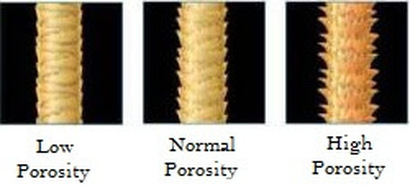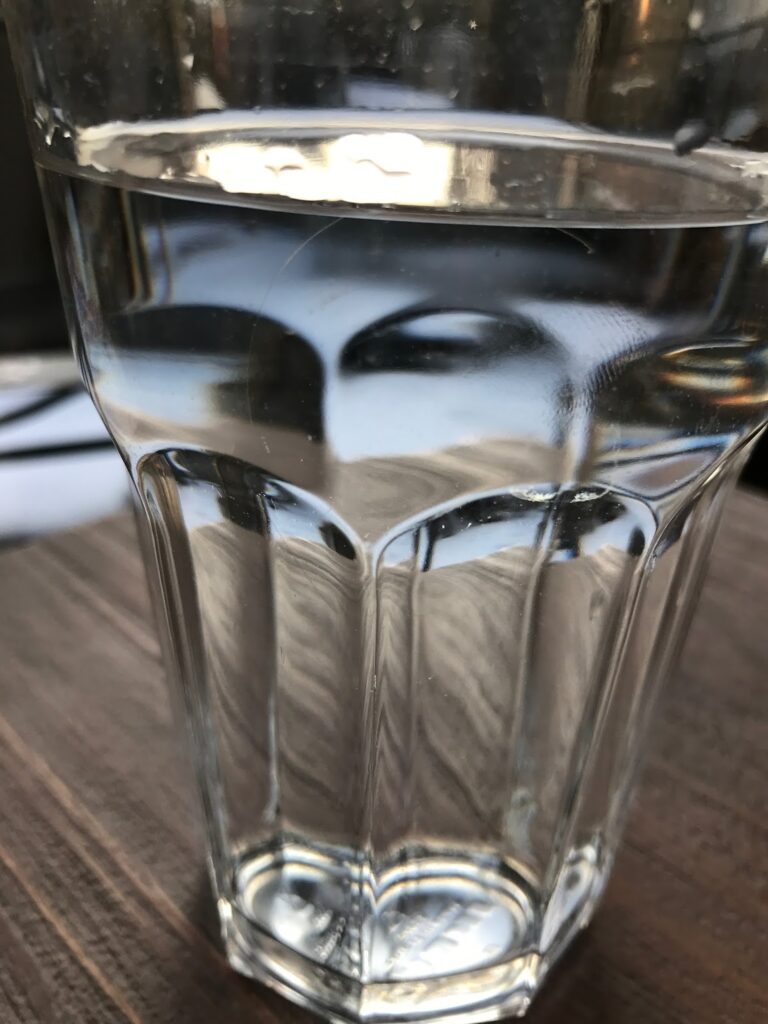Porosity is the term used in the science of hair care to describe how well your hair can absorb and retain moisture. The porosity of your hair is very important if you want to choose the right products for your hair. If you have dry and porous hair, it is usually a result of a lack of moisture. This will also make it more difficult to get long hair, because your hair breaks faster. But if you know the porosity of your hair, you can turn the tide and know which products are best for your hair!

Hairs consist of hair cuticles, which connect with each other like roof tiles. With a low porosity there will be little to no space between the roof tiles, while with a high porosity there will be a lot of space between them. There are three types of porosity, from low to high. If your hair has a low porosity, it will hardly absorb moisture and with a high porosity, the hair will easily absorb moisture. However, with a high porosity, the hair retains moisture more difficult. Hairs with normal porosity can absorb just the right amount of moisture.
The porosity of your hair can be genetically determined, but the frequent use of chemical hair dye, hair dryer or hair straightener will make your hair even more drier and more porous. As a result, you will sooner suffer from fragile hair that breaks easily. But also using hair care with aggressive ingredients or shampooing too often can cause porous hair. To find out the porosity of your hair, you can do the “float test”.
The float test
Collect a big piece of hair out of your hairbrush. It is best to have a minimum of 10 hairs. Wash these hairs under the tap with a little bit of dish soap. The hairs must be clean. Then take a large glass and fill it completely with water. Leave the hair in the glass for about a half a minute and then see where the hair is in the water.
- Low porosity: If the hair remains on top of the water.
- Medium porosity: If the hair floats in the middle of the glass.
- High porosity: When the hair sinks almost immediately to the bottom and stays there.
Note: this float test is helpful, but not always te best way to test the porosity of your hair. You can also feel your hair (hold one hair and let is slide through your fingers, do you feel the cuticles?) or you can ask yourself this question: How long does it take for my hair to dry? When you have low porosity it can take half a day or a whole day or even 2 days until your hair is completely dry after you washed it.

Low porosity hair
Low porosity hair is often very healthy hair. It has a tightly bound cuticle layer with flat overlapping scales. Most of the time this hair is very strong because it contains enough protein but it cannot absorb moisture very well. It can take a very long time before the hair is completely wet or dry. It seems that the water is slipping off your hair. When the hair is wet, it can also take a very long time before it is dry again. Low porosity hair is prone to build up and does not tolerate protein products. They make the hair feel stiff and straw like.
Low porosity hair needs a little bit of warmth to open the cuticles and let is absorb any product. A few tips:
- Buy a steamer for your hair. The hair cuticles will open better through the steam and your hair can absorb any leave in or product better.
- Use a Heat Cap.
- Apply a moisturizer to damp hair instead of soaking wet hair.
- Stay in the bathroom if you want to nourish your hair with a certain product. The bathroom is often still nice and warm and humid, this will ensure that the hair cuticles remain open.
- Do not use heavy products! Low porosity hair likes water based products.
Note: When you dye or bleach your hair, it may seem like the porosity of your hair changes, but when you have low-porosity hair, your hair will always be and stay low porosity. When you bleach or dye your hair, your low porosity hair will need protein. But you can only use hydrolyzed protein (this can penitrate your hair) and you always need to use warmth to open the cuticles.
Medium porosity
Medium porosity hair often requires the least attention. The cuticle layer is looser so that just the right amount of moisture goes in and out of your hair. Care products will be absorbed well and the hair is easy to style. But beware: The frequent use of heat and chemical treatments can still make your hair porous.
High porosity
With high porosity hair, the hair cuticles are too open. Because of this the hair can quickly absorb moisture, but the moisture also goes out of your hair at the same pace. You can recognize porous hair by the fact that it gets wet quickly and also dries up again very quickly. Because high porous hair cannot retain moisture well, the hair dries quickly, it has little elasticity and it quickly gets tangled. This can cause breakage to your hair. In many cases, this is the result of damage from, for example, chemical treatments or too much heat. For example from a flat iron, curling iron or a hair dryer.
A few tips:
- Seal your hair! Sealing is applying a little bit of oil on top of your moisturizer. The LOC method is a method that works really well with hair with a high porosity. Use a light oil, such as jojoba oil or argan. Also, don’t use too much to make sure your hair doesn’t get greasy.
- Avoid the hair straightener or curling iron and the hair dryer.
- Always end with a cold water rinse. This allows the hair cuticles to close.
- Hair with a high porosity likes to get an occasional protein treatment.
- You can also close the hair cuticles extra well by using an acid rinse after washing your hair.
- You can use a cotton t-shirt or micorfiber towel to dry your hair. This way you will avoid friction.
Did you find this blog helpfull? Or do you have any questions? Let me know below.
Do you want to stay inspired and receive nice tips or triqs? Or do you just want to be immediately informed when a new blog is online? You can follow me on my Facebook page @natuurlijkehaarverzorging or follow me via my Instagram account: @rachel_naturalhaircare
